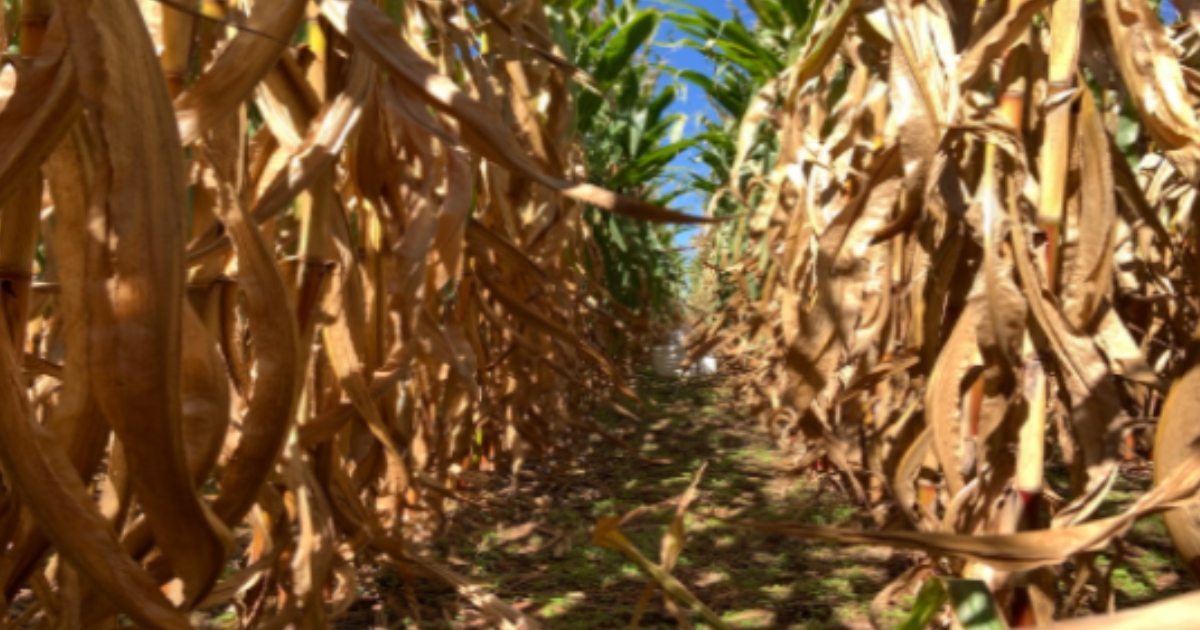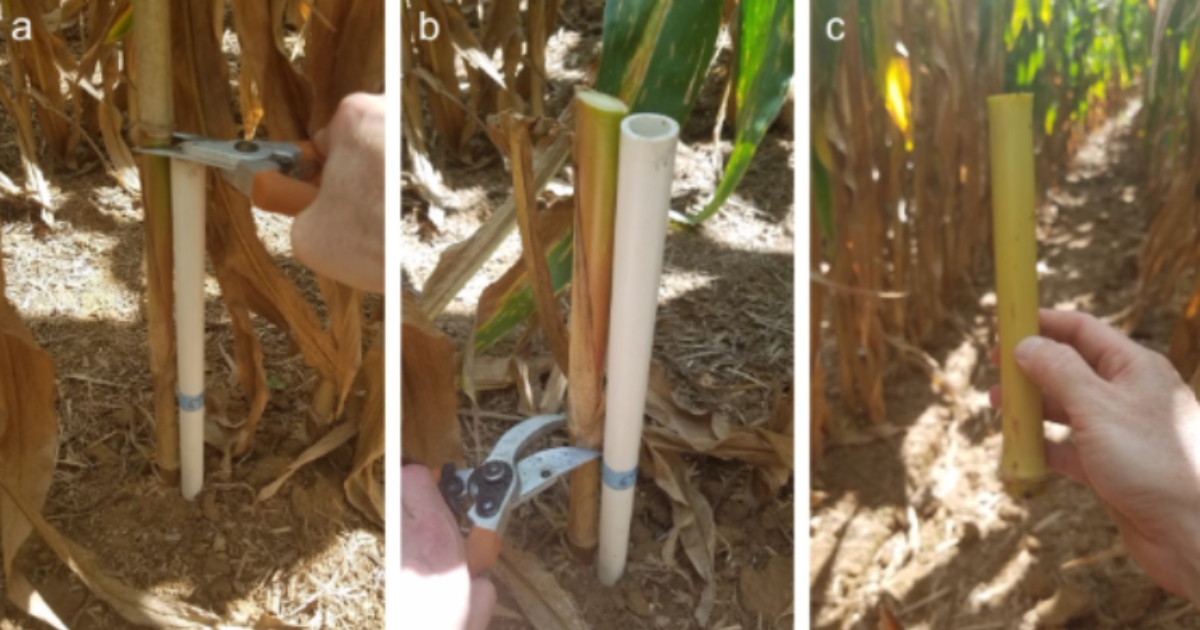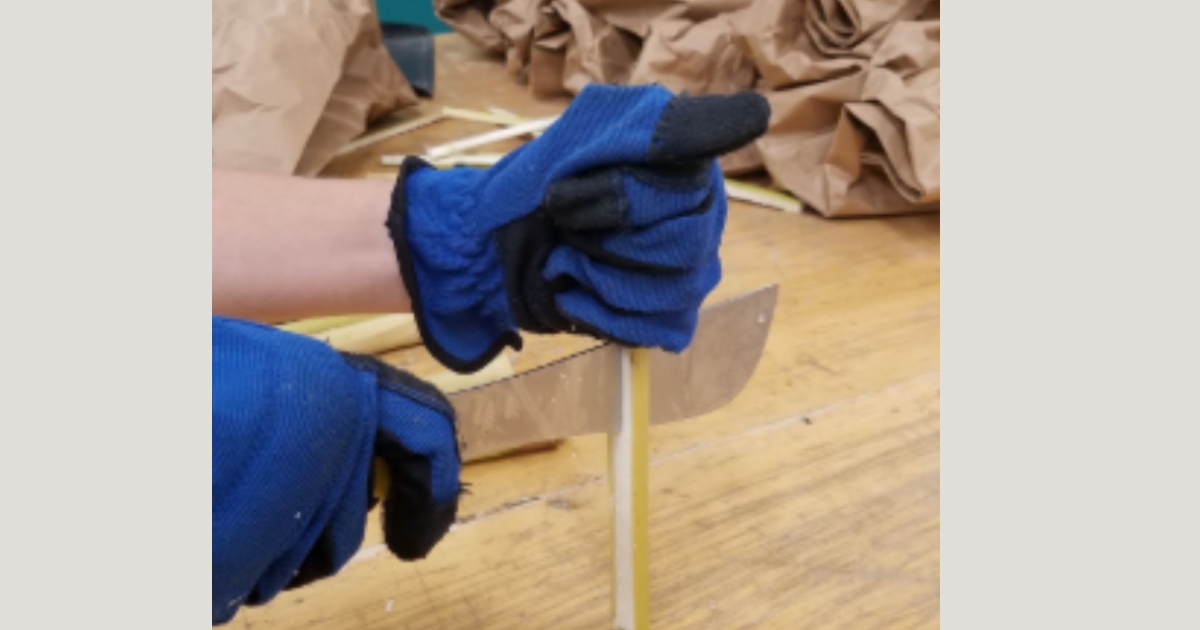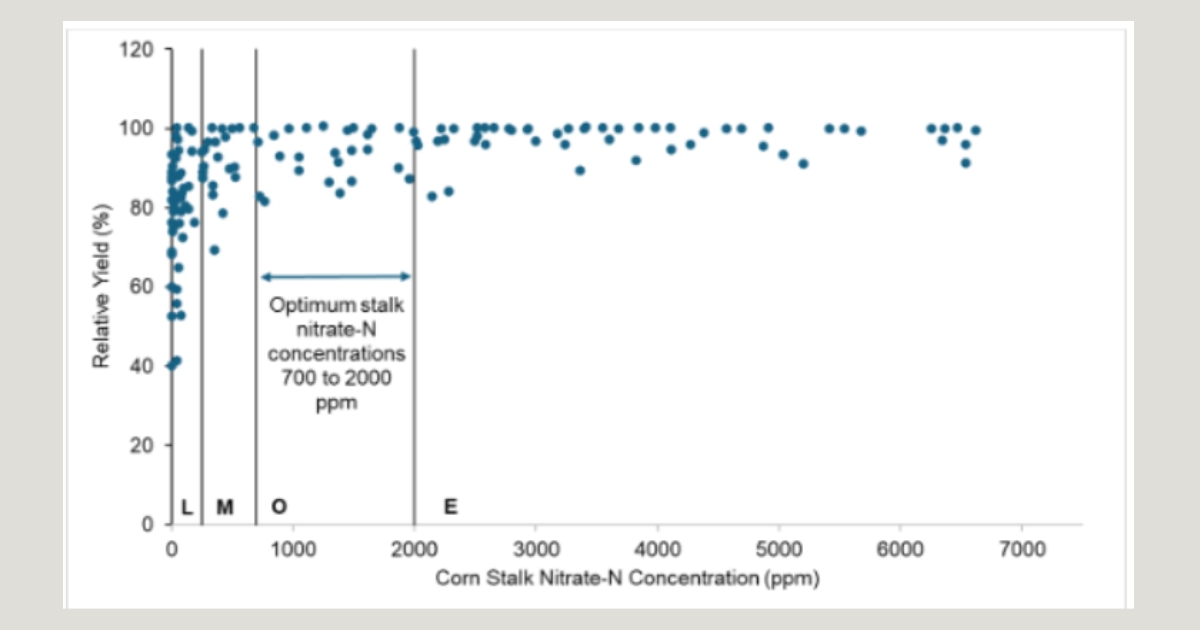
Fact Sheets And Publications

End-of-Season Corn Stalk Nitrate Testing to Optimize Nitrogen Management
April 2025 | Written by: Amy L. Shober, David Hansen, Gregory Binford, and J. Thomas Sims
Background
The end-of-season corn stalk nitrate test (CSNT) is a simple, inexpensive tool that can be used to assess the nitrogen (N) status of a corn crop at the end of the growing season. Data from studies collected in Delaware (and other states) showed that the CSNT can improve corn N management programs (Binford et al., 1990; Sims et al., 1995). The purpose of this fact sheet is to describe CSNT principles, practices, and interpretation of results in Delaware.
Basis of the Corn Stalk Nitrate Test
Nitrogen is a mobile plant nutrient, which means that the plant can move (or translocate) N from older plant tissues to the point of active growth or, in the case of corn, to grain-fill in the absence of adequate N supplies in the soil. Under extreme N deficiency, the translocation of N to new growth will result in chlorosis (or yellowing) of older plant tissues, making N deficiency visually noticeable (Figure 1). However, corn plants can experience yield-reducing N deficiencies without showing obvious visual symptoms. In contrast, N tends to accumulate in the lower leaves and stalks of corn plants that have access to more N than needed to achieve optimal grain yields. When excess N is available, the lower leaves and stalks may remain dark green late into the growing season. Yet, excess N in plant tissues may also not manifest visually. As such, it is difficult to determine if N concentrations in corn plants are deficient, adequate, or excessive based solely on visual cues.

Researchers found similar relationships between the concentration of N in the lower stalks at the end of the season in corn trials conducted over a wide range of conditions. As such, the CSNT quantifies the amount of N in the lower stalk at the end of the growing season. This post-mortem test can identify if the crop was under- or over-fertilized during the growing season, or if N supplies were optimal.
Collecting Corn Stalk Nitrate Samples
Collecting a representative corn stalk sample is the most important step to obtaining good results from the CSNT. Sample corn stalks no earlier than one week after black layers have formed on approximately 80% of the kernels of most ears. Stalk samples can be collected from this point until harvest.
Collect the corn stalk samples by cutting an 8-inch segment of stalk between 6 and 14 inches above the soil surface (Figure 2). Remove leaf sheaths from stalk samples. Severely damaged or diseased stalks should be avoided.
Collect 15 stalk segments from areas of the field that are no larger than 10 acres with uniform soil type and management history (i.e., management unit).
Quarter the stalks and combine one stalk quarter from each of the 15 stalk segments to form a single composite sample per 10-acre management unit. Quartering the stalks ahead of time helps to reduce the volume of material that is submitted to the lab to facilitate sample preparation (Figure 3).
Place composite stalk samples in paper bags to allow for some drying and to minimize the growth of mold. Do not place stalk samples in plastic bags as mold will complicate analysis.
Ship corn stalk samples immediately to an analytical laboratory that offers the CSNT test. University of Delaware Cooperative Extension can assist in locating reliable testing laboratories. Refrigerate samples that cannot be shipped to the testing lab within 24 hours.


Interpreting Corn Stalk Nitrate Test Results
The analytical lab will report the concentration of nitrate-N (NO3-N) in the stalk sample, usually as parts per million (ppm). It is important to note that the concentration of nitrate-N at the end of the season will be a reflection of all the factors that influenced growth during the season, not just N management. Environmental conditions like drought or excessive rainfall, as well as agronomic factors such as poor ear development, extended grain-fill periods, hybrid characteristics, and pest or disease pressure, all play significant roles in test outcomes. When evaluating CSNT data, it's critical to consider the specific growing conditions that occurred during the season, particularly during grain development. For instance, drought stress or poor kernel formation can lead to reduced grain production and potentially misleading test results, while optimal conditions with prolonged grain fill may result in higher N use efficiency than normal. As such, care must be taken when interpreting the results of the CSNT.
Corn stalk nitrate-N concentrations can be divided into four categories (Figure 4), as follows:

Low (< 250 ppm): Stalk nitrate concentrations in the “low” range indicate a high probability that additional fertilizer or manure N would have resulted in higher yields. Visual signs of N deficiency usually are obvious when stalk nitrate-N concentrations are within this range.
Marginal (250-700 ppm): Stalk nitrate concentrations in the “marginal” range indicate that N availability was very close to the minimal amount needed to maximize grain yields. Visual signs of N deficiency are less common when nitrate-N concentrations are in the “marginal” range. Although yields usually are not adversely affected by N deficiencies of this magnitude, this range is too close to the economic penalties associated with N deficiencies to be the target for good N management.
Optimum (700-2000 ppm): Stalk nitrate concentrations in the “optimum” range indicate a high probability that the amount of soil, fertilizer, and manure N available during the growing season was sufficient to maximize profits for the producer. Growers should strive for corn stalk nitrate-N concentrations in the “optimum” range.
Excessive (> 2000 ppm): Stalk nitrate concentrations in the “excessive” range indicate a high probability that the amount of fertilizer or manure N applied was greater than necessary to maximize profits for the producer. Nitrate leaching to ground waters is a serious concern when corn stalks have nitrate-N concentrations in the “excessive” range. Nitrogen management practices used this year should be reviewed carefully and modified in the future to avoid over-fertilization with N, which is uneconomic and can contribute to nonpoint source pollution of ground and surface waters.
After appropriate consideration of weather and other factors, we recommend that fertilizer and manure N rates should be increased on fields that test in the “low” range and decreased on fields that test in the “excessive” range. The decision to adjust N rates for that fall in the “marginal” range is a bit more nuanced. For example, Penn State researchers reported that the most economically beneficial yield response to added N, as measured in N rate response trials conducted in PA between 2020 and 2023, occurred when corn stalk nitrate-N levels were between 115 and 315 ppm; the 250 ppm N deficiency threshold (i.e., the break point between the “low” and “marginal” ranges) falls within this range. In the Penn State studies, the researchers found that CSNT concentrations below 115 ppm led to significant yield losses due to N deficiency, while CSNT concentrations above 315 ppm resulted in application of excess nitrogen application without a profitable yield increase. The Penn State research highlights the economic importance of fine-tuning N management rather than solely avoiding deficiency.
While results of the CSNT can help identify fields where N management could potentially be improved, they cannot currently be used to determine how much N rates should be increased or decreased for a given stalk nitrate concentration. However, monitoring CSNT concentrations over several growing seasons will allow corn producers to track trends in stalk nitrate-N concentrations over time to help identify N management practices (e.g., rates, forms, and timing of application) that tend result in more efficient use of N in fertilizers and manures.
Summary
The CSNT provides growers with a post-mortem snapshot of how efficient their N management practices were during the most recent growing season. While the results of the CSNT test cannot be used to fine-tune N management in-season, the CSNT is a valuable tool that can help growers optimize their farms N management. The CSNT is most effective when used annually to evaluate how N management strategies and growing conditions affected corn N use efficiency. We recommend growers incorporate the CSNT into their corn management strategies as part of an adaptive N management approach that will improve N use efficiency that will help maximize yields while protecting water quality.
References
Binford, G. D., Blackmer, A. M. & El-Hout, N. M. (1990). Tissue test for excess nitrogen during corn production. Agronomy Journal, 82:124-129. https://doi.org/10.2134/agronj1990.00021962008200010027x
Sims, J. T., Vasilas, B. L., Gartley, K. L., Milliken, B. & Green, V. (1995). Evaluation of soil and plant nitrogen tests for maize on manured soils of the Atlantic Coastal Plain. Agronomy Journal, 87:213-222. https://doi.org/10.2134/agronj1995.00021962008700020013x
White, C. W. & Spargo, J. T. (2024). Consider the cornstalk nitrate test to assess your nitrogen management. PennState Extension. Available at: https://extension.psu.edu/consider-the-cornstalk-nitrate-test-to-assess-your-nitrogen-management
About the Authors
Amy L. Shober (Corresponding author), Professor and Extension Specialist, University of Delaware, Newark, DE (ashober@udel.edu)
David Hansen, Program Leader, Oregon State University, Corvallis, OR
Greg Binford, Director of Advanced Agronomy Training, Wilbur-Ellis, Cicero, IN
J. Thomas Sims, Professor and Extension Specialist, University of Delaware, Newark, DE (Retired)
About this Publication
Original Publication Date: 1999
Revision date(s): 2025
Adapted from an original publication developed by D. Hansen, G. Binford, and J.T. Sims (1998)
Peer Reviewers
Drew Harris, Extension Agent, University of Delaware Cooperative Extension, Dover, DE
Sapana Pokhrel, Postdoctoral Researcher, University of Delaware, Newark, DE
UD Cooperative Extension
This institution is an equal opportunity provider.
In accordance with Federal law and U.S. Department of Agriculture policy, Cooperative Extension is prohibited from discriminating on the basis of race, color, national origin, sex, age, or disability.
